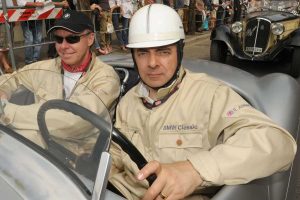The Return of the Fully Handmade Watch

Ferdinand Berthoud montre 3
Ferdinand Berthoud has done something few thought possible in contemporary horology: unveil a wristwatch made entirely by hand. The Naissance d’une Montre 3 is the product of a decade-spanning initiative to safeguard endangered watchmaking skills, and it stands as a rare answer to a modern conundrum. Independent watchmaking has flourished, yet even the most acclaimed ateliers rely on CNC machines and electro-erosion for precision parts. This project imposed a different rulebook—no computerized assistance, only hand-powered tools and human judgment from start to finish.
The Naissance d’une Montre series, overseen by the Time Æon Foundation, began in 2009 with a clear mission: preserve and transmit the techniques that once defined high horology. The first watch emerged under the eye of Philippe Dufour and Greubel Forsey, crafted by watchmaker Michel Boulanger. Its impact reverberated across the field, inspiring Greubel Forsey’s Hand Made 1 and 2—both widely cited as benchmarks of what pure handcraft can achieve. A second Naissance project, started in 2015 by Dominique Buser and Cyrano Devanthey with guidance from Greubel Forsey and Urwerk, pushed design in a different direction. In 2019, it was announced that Ferdinand Berthoud would take on the third chapter, and the brand has answered with a work that feels coherent, historical, and frankly astonishing.
Unlike earlier collaborations that blended multiple design languages, Naissance d’une Montre 3 speaks in a single, unified voice: Ferdinand Berthoud’s. The aesthetic is rooted in the brand’s marine chronometer heritage—crisp, functional, and exacting—yet it hides an almost unbelievable truth. Every visible and invisible component has been cut, turned, filed, drilled, finished, and assembled by hand. The result looks modern in its cleanliness and structure; it just happens to have arrived via methods that predate modern industry.
At the heart of the movement is a fusée-and-chain constant-force mechanism, a device that first appeared in clocks centuries ago. As a mainspring unwinds, it delivers diminishing power. The fusée equalizes that force: a tapered cone linked to the barrel by a micro-chain regulates the torque reaching the escapement. It’s ingenious—and notoriously laborious. Chains are among the most challenging components to produce, even with industrial tools. Here, every element is made by hand: hundreds of tiny links connected by minute pins, forming a living, breathing transmission. The watch runs for about 50 hours and even maintains power during winding thanks to an auxiliary spring inside the fusée, so timekeeping isn’t interrupted while the crown turns.
The display is classic Berthoud. A long, blued central seconds sweeps around a white-gold chapter ring, while the main time indication sits in stately balance. Every index, every numeral is engraved freehand, a small but telling signal of the project’s purpose: skills preserved through practice, not code.
Equally emblematic is the split bi-metallic Guillaume balance. Before modern alloys, temperature changes played havoc with accuracy. The solution, perfected over generations, was a balance made from different metals that expand at different rates, stabilizing timekeeping. Charles-Edouard Guillaume’s breakthrough alloy at the end of the 19th century reduced temperature errors dramatically and earned him a Nobel Prize. Today, such a balance is unnecessary, yet the team relearned the technique specifically to rescue it from extinction. The achievement is not merely academic: Naissance d’une Montre 3 is COSC-certified, a chronometer by modern testing standards—likely the first fully handmade watch, and one of the only with a bi-metallic balance, to pass that gauntlet.
Turn the watch over and the poetry continues. Plates in German silver carry a sandblasted texture more reminiscent of French and English traditions than contemporary Swiss norms. Bridges and flanks glow with carefully executed anglage; select screws are heat-blued; the gilded plates impart a subdued warmth. Natural diamond end-stones cap the balance, secured by hand-made shock absorbers. An inscription near the fusée-and-chain reads, in French, “Dedicated to time, the great teacher”—a quiet signature that captures the project’s spirit.
The white-gold case is round and restrained, with lugs screwed and soldered into the caseband. At 44.3mm in diameter and 13mm thick, the watch is surprisingly comfortable, supported by a generously sized crown that makes winding a tactile pleasure.








